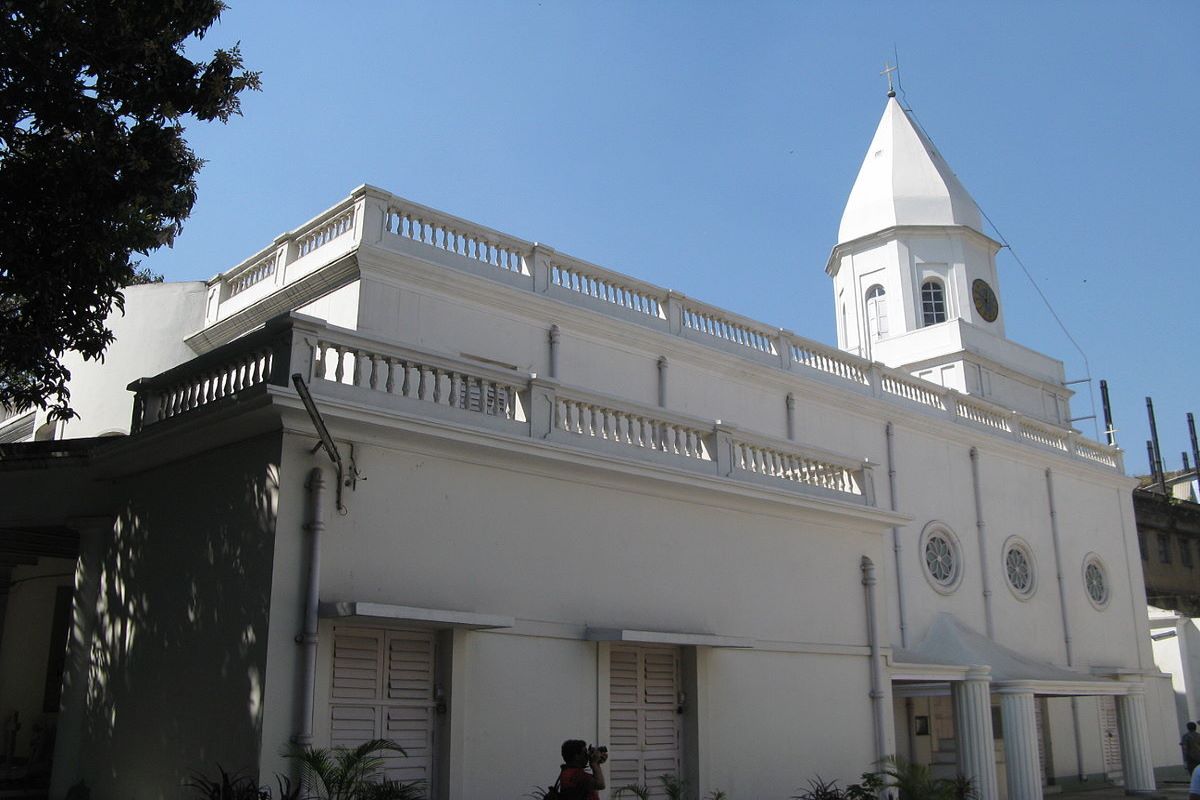Puja club shows the way for unity in diversity with vote for Ma
In a tribute to unity in diversity, India’s unique identity, the club brought together women from the neighbourhood, representing the various religions.
Even before the British, the Armenians arrived in Bengal to escape the organized persecution of their ethnic group under the Ottoman Empire. Torn by conflict, the Armenians were devout followers of the Armenian Apostolic Orthodox Church (in pix). With a penchant for entrepreneurship, the community prospered in Calcutta.

Armenian Apostolic Orthodox Church (SNS)
With the progression of time, the changing countenance of Calcutta ebbs with chunks of history; that today seem to drift in the air like broken voices from the past. Each and every lane or bylane in Calcutta throbs with slow, reluctant inertia. But what remains buried in the deep folds of time, is the history of communities like the Armenians who defined the meridians of Calcutta’s history as we know it today.
Even before the British, the Armenians arrived in Bengal to escape the organized persecution of their ethnic group under the Ottoman Empire. Torn by conflict, the Armenians were devout followers of the Armenian Apostolic Orthodox Church (in pix). With a penchant for entrepreneurship, the community prospered in Calcutta.
This South Caucasian community built their own church, college and schools in Calcutta. Iconic buildings such as Stephen Court, Queen’s Mansion, The Oberoi Grand and the Park Mansions- which glimmer like a beacon across Calcutta’s skyline have all been built by Armenian merchants.
Advertisement
Further, the 200-year-old Armenian College and Philanthropic Society on Mirza Ghalib Street, a living and breathing piece of history, was also built by them. As the Armenian community blended with the cultural landscape of Kolkata, they came to be known for their business acumen, delectable cuisine and as marquee rugby players.
When the Armenians first disembarked in Calcutta, they settled in and around Armenian Street. Previously, one of the cardinal features of an Armenian home would be the furious growth of grapevines. These grapevines were grown for its leaves to make dolmas. Interestingly, the origin of the dolma(much celebrated as potol er dolma in Bengal) can be traced back to the Ottoman empire. The word ‘dolma’ comes from the Turkish word ‘dolmark’ which means ‘to be stuffed’.
The ottoman turks stuffed vegetable with meats, a reference heavily laden in Ottoman Arabic cookbooks. As the community thrived, Bengali and Armenian cultures coalesced, a by-product of which is the potol er dolmaas we know it today. However, the recipe foregrounds it’s culminating moments in not only Armenian culinary tradition, but also in the Jewish preparation called ‘mahashas’.
The Armenian Sports Club on Mayo Road, Calcutta brushes boundaries with the Calcutta Parsee Club. Both have been integral to the social life of any Armenian living in Calcutta. Even today, every time the Armenian team takes
on an opponent on the football field, a large congregation of Armenian boys and girls in colours resembling the Armenian flag surround the boundaries of the small 5-a side field in fierce support.
However, what has remained changeless in the changing new is the fanfare that follows any rugby match. According to an exhaustive timeline of rugby published in the Armenian College and Philanthropic Academy (ACPA) website, the Armenians were the first to field a non-British rugby team 140 years ago. The word ‘Arun’ which translates to ‘blood’ in Armenian is the slogan which the players hail before the beginning of any match.
In the past, the boys of ACPA as well as the Armenian Sports Club have represented India at the under-19 level under the captaincy of Ejmin Shahjani. The team had also qualified to participate in the All-India South Asia Rugby tournament. During Calcutta Monsoons, the dizzying worlds of rugby and football tend to live like a charm in the hearts and minds of the players who play and the spectators who come to cheer.
Not only Armenians but many rugby enthusiasts revel in the spirit of Monsoon which tends to assume the dimension of a festival for sports enthusiasts. At this juncture in history, the Armenian community has managed to create a distinct cultural identity of their own not only in Calcutta but in the Indian subcontinent too.
Advertisement